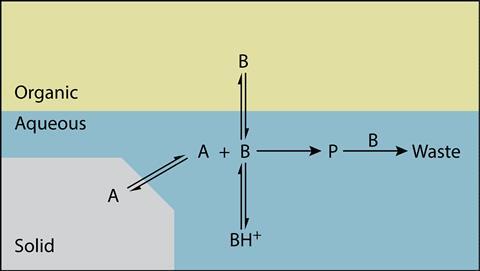A skills gap is emerging in organic synthesis that needs to be closed
It is the role of universities to train the scientists of tomorrow. This has always been a difficult challenge – and it is getting harder. The way science is conducted is changing, and the pace of change itself is increasing. This can lead to skills gaps, which historically industry has plugged by recruiting based on a general aptitude, followed by providing specific in-house training.
In some areas, this still works well. However, as the skill gaps increase this strategy becomes less effective – and it’s in no one’s interest to find out later that the required aptitude or interest for areas beyond those taught are lacking. Such a gap is starting to develop in chemical process development, and needs to be addressed urgently.
The way we understand reactions through kinetic and mechanistic studies has undergone major changes in recent years – not just in finding out whether a particular reaction occurs and its yield, but the quantitative understanding of how and why it occurs with a particular yield, rate and selectivity. This is still a developing scientific field, but obtaining a quantitative mechanistic analysis of desired versus undesired reactions has never been easier or quicker, and tools that were cutting edge just a few years ago have now become common place. High-quality time-resolved data can be obtained readily using multiple in situ probes, covering everything from simple pH and temperature measurements to spectroscopy and droplet (in an emulsion) and particle (in a slurry) size analysis. These measurements can then be further supplemented with highly sophisticated quantum mechanics and molecular mechanics (QM/MM) calculations. However, the general ability of synthetic chemists to make full use of this wealth of quantitative data has not kept pace with these developments. This means the potential benefits are not being fully realised.
Seeing the big picture
To take full advantage of the changes in data availability requires a change in the ways of working. Designing the correct experiments and choosing which data to collect is now a critical part of the whole; the emphasis has moved from the outcome of individual experiments to using a conceptual view of the system to design experiments, which work together to build up a quantitative picture of the reaction. These can be further supplemented and built upon as required during process development (see below).

The days of changing a single parameter and just seeing what happens are long gone. Methods such as fractional factorial design of experiment, where systematic changes are made to multiple parameters between successive experiments, are also being refined by more intelligent, efficient designs. These provide targeted experiments which deliver the most mechanistic and parametric information.1 In our field, this derived reaction understanding then feeds into optimisation and identification of the critical parameters required to control the ultimate manufacturing process. But that is not where it ends. Changes to the regulatory environment (such as continuous process verification) mean that there is now also a greater requirement to collect and analyse data from production in order to demonstrate that a manufacturing process is under control. Consequently, skills in data manipulation, visualisation and mining are becoming essential in ways that just weren’t seen previously.
Ways of thinking
Obviously, with such a major change in the ways of working, there needs to be a comparable change in the training scientists receive at university. Training in the use of specific leading edge equipment is useful and a good way to bring new methods into industry, but the key and hardest part is instilling the right thinking skills. Arguably, one of the hardest skills to find among synthetic chemists is the ability to think quantitatively. Confidence and competence in statistics and mathematics is a good foundation. However, one neglected skill is often error analysis and demonstrating the statistical relevance of conclusions; while this is usually standard in undergraduate experimental reports, it has less emphasis when it comes to writing up a PhD thesis.
Quantitative thinking, however, goes beyond the statistics and maths. It involves being able to break down a complex reaction into its individual parts, gather information from several sources, make the necessary missing measurements and then put it all back together again in a way that is quantitatively predictive.
This does not mean that there is no place in process development for skilled synthetic chemists – the need is still just as great. The starting point for good process development is still the selection of the correct synthetic route. However, the way that this route will be identified and then developed into a safe, environmentally acceptable, scalable and cost-effective manufacturing process that reliably delivers quality product has changed and continues to do so. These changes bring new opportunities but to fully realise their potential requires a ready mind trained with a different set of behaviours, skills and ways of working.
References
1 F Galvenin et al, Comp. Chem. Eng. 2016, 95, 202












No comments yet